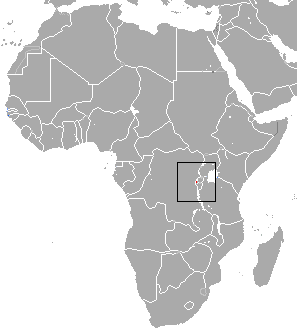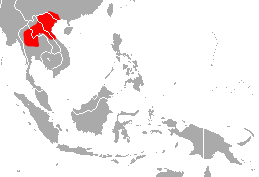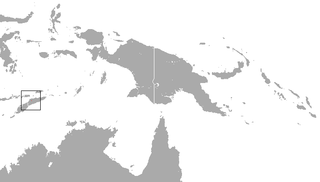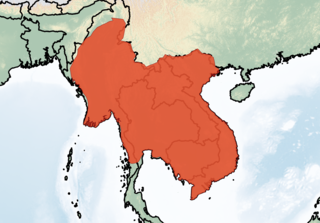
Horseshoe bats are bats in the family Rhinolophidae. In addition to the single living genus, Rhinolophus, which has about 106 species, the extinct genus Palaeonycteris has been recognized. Horseshoe bats are closely related to the Old World leaf-nosed bats, family Hipposideridae, which have sometimes been included in Rhinolophidae. The horseshoe bats are divided into six subgenera and many species groups. The most recent common ancestor of all horseshoe bats lived 34–40 million years ago, though it is unclear where the geographic roots of the family are, and attempts to determine its biogeography have been indecisive. Their taxonomy is complex, as genetic evidence shows the likely existence of many cryptic species, as well as species recognized as distinct that may have little genetic divergence from previously recognized taxa. They are found in the Old World, mostly in tropical or subtropical areas, including Africa, Asia, Europe, and Oceania.

The intermediate horseshoe bat is a bat species of the family Rhinolophidae that is very widespread throughout much of the Indian subcontinent, southern and central China and Southeast Asia. It is listed by IUCN as Least Concern as it is considered common where it occurs, without any known major threats.

The lesser woolly horseshoe bat, also called Beddome's horseshoe bat, is a species of bat in the family Rhinolophidae. It is found in India and Sri Lanka. Its natural habitats are subtropical or tropical moist lowland forests, caves, and urban areas.

The Andaman horseshoe bat is a species of bat in the family Rhinolophidae. It is endemic to the Andaman Islands. During the day, it roosts in caves, but may also choose tree hollows.

The convex horseshoe bat is a species of bat in the family Rhinolophidae. It is found in Malaysia and Laos.

Rhinolophus hilli, Hill's horseshoe bat, is a species of bat in the family Rhinolophidae. It is endemic to Rwanda. Its natural habitats are subtropical or tropical moist montane forests, caves, and subterranean habitats. In 2013, Bat Conservation International listed this species as one of the 35 species of its worldwide priority list of conservation. It is threatened by habitat loss.

Blyth's horseshoe bat is a species of bat in the family Rhinolophidae. It is found across southern Asia from Afghanistan to Vietnam. The species can be identified from its pointed, bifid sella.

The Maendeleo horseshoe bat is a recently discovered species of bats in the family Rhinolophidae. It inhabits caves of the Coastal Lowland forests of Tanzania. Its closest relative is the Adam's horseshoe bat. It was described in 2000.

The smaller horseshoe bat is a species of bat in the family Rhinolophidae. It is found in Australia and Papua New Guinea.

Bourret's horseshoe bat is a species of horseshoe bat native to Southeast Asia. The name "paradoxolophus" is derived from the Greek words paradoxos, meaning "contrary to expectation", and lophos, meaning "crest". This name refers to the bat's difference in nose-leaf morphology compared to other Rhinolophus species. There are no recognised subspecies.

The Thai horseshoe bat, sometimes called the Thai leaf-nosed bat, is a species of bat from the family Rhinolophidae. It is frequently listed as a subspecies of the Big-eared horseshoe bat, but this may be a result of the two species being taken in sympatry in Laos. It is native to China, Laos, Thailand, and Vietnam.

The Madura horseshoe bat is a species of bat from the family Rhinolophidae. Current taxonomy treats the Madura horseshoe bat as a species separate of the Sulawesi horseshoe bat and not including parvus, but Csorba et al. (2003) recognizes both as subspecies of the Sulawesi horseshoe bat. It is known only from seven specimens from Madura Island and the Kangean Islands in Indonesia, and its type locality is Soemenep, Madura Island. The species is listed as Vulnerable on the IUCN Red List, and it suffers from habitat loss due to limestone excavation and deforestation for logging and agriculture in its habitat. It is also unknown whether or not the Madura horseshoe bat lives in any protected areas. The species is cave-roosting and most likely independent of water, foraging in primary forest.

Shortridge's horseshoe bat is a species of Horseshoe bat native to Northeast India, northern Myanmar, and southern China. It was first described in 1918 by Knud Andersen, and was considered a subspecies of Blyth's horseshoe bat until 2003 when the two species were collected in sympatry.

The Timorese horseshoe bat is a species of bat native to Timor-Leste.
Rhinolophus xinanzhongguoensis, the wedge-sellaed horseshoe bat or southwestern China horseshoe bat, is a species of horseshoe bat from China.

Rhinolophus microglobosus is a species of horseshoe bat found in Southeast Asia.
McIntyre's horseshoe bat is a species of horseshoe bat that is endemic to Papua New Guinea.
The Yaeyama little horseshoe bat is a species of bat in the family Rhinolophidae that is endemic to the Yaeyama Islands of Japan.
















